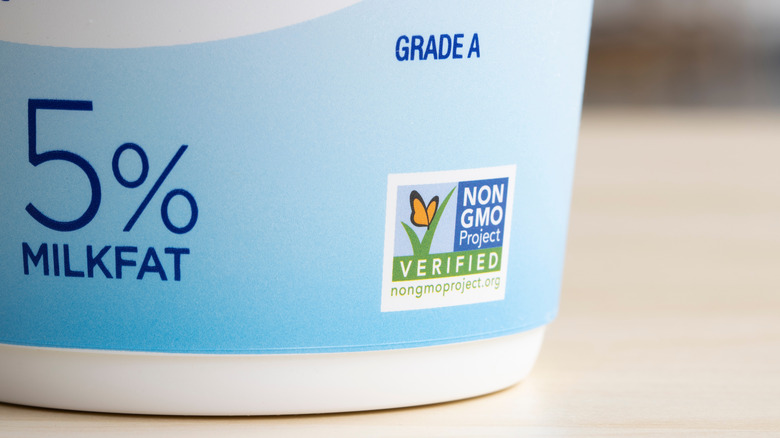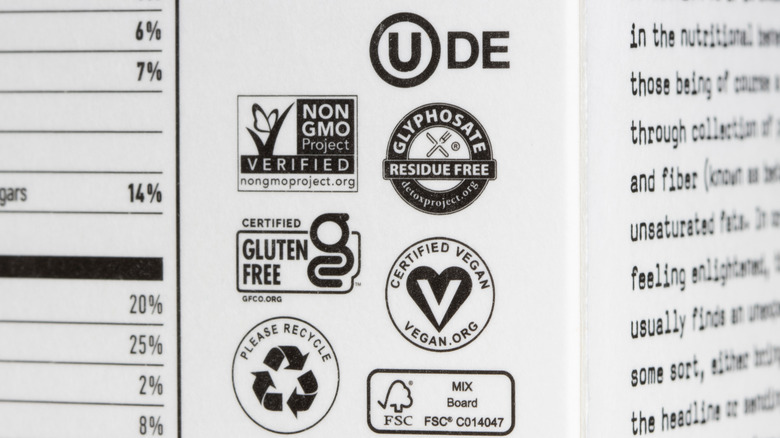Organic Vs Non-GMO: What's The Difference Between The Two?
Consumers are seeking out and finding a jumble of certifications, claims, allergen disclosures, "free-from" statements, and more whenever they pick up a product in the grocery store. Two of the labels they increasingly look for are organic and non-GMO –- so much so that Costco has now become the largest retailer of organic foods in the United States. Yet, even after spending $6 billion for organic foods at Costco alone, many shoppers don't know the difference between organic and non-GMO and often think they are one and the same. To know what you're paying for, it's important to know exactly what it means when you're buying either one.
Non-GMO is just one of the requirements organic foods must meet in order to be certified as organic. The organic certification program, which is overseen by the U.S. Department of Agriculture, is a voluntary program that oversees how animals are raised; how, where, and when crops are grown; how pests are managed; and prohibits the use of three core components of modern agriculture: synthetic pesticides, chemical fertilizers, and genetically modified organisms (GMOs). The goals are to preserve farm resources, encourage balance in the environment, and conserve biodiversity.
In order to achieve an organic certification, 95% of the ingredients in foods that are labeled organic must be organic themselves. The remaining 5% must be from a list of approved non-organic ingredients. Products that are labeled "made with organic ingredients" must contain at least 70% organic ingredients and all remaining ingredients must be made non-GMO, among other requirements.
What is genetic modification?
Genetic modification –- also known as bioengineering or biotechnology — refers to a process in which the genes of a plant, animal, bacteria, or virus has been manipulated outside of nature or traditional cross-breeding methods. It is one of the most controversial practices in agriculture and is either banned or restricted in many parts of the world. Some foods that have been approved for genetic modification in the United States include corn, cotton, potatoes, salmon, and some kinds of apples, amongst many others.
There is no official U.S. label for non-GMO foods. After the Food & Drug Administration (FDA) determined that bioengineered foods are safe to eat and pose no risk to human health, Congress passed the National Bioengineered Food Disclosure Standard, which requires GMOs and foods made with GMO ingredients to carry a label or text noting that it is bioengineered.
Testing for GMOs
Foods that are non-GMO must undergo some form of testing to verify the absence of bioengineered ingredients. Many food manufacturers do so through the Non-GMO Project, a nonprofit third-party organization known for its distinctive butterfly logo. Under this organization, certified foods have been tested and found to be free of GMOs.
Still confused? There is one simple rule to keep in mind. All certified organic foods are non-GMO, but not all non-GMO foods are certified organic. If you want to make sure the food you're buying is not only free of GMOs but also chemical fertilizers and synthetic pesticides, look for the organic label.


